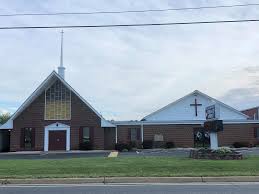Applying for a church loan can be a vital step for many religious organizations seeking to expand, renovate, or maintain their facilities. However, securing financing for a church requires thoughtful preparation, clear communication, and an understanding of the specific requirements lenders look for. In this article, we’ll explore the key steps involved in applying for a church loan and provide tips to maximize your chances of approval.
Understanding Church Loans
Church loans are typically offered by specialized lenders who understand the unique needs and structures of religious institutions. These loans can be used for a variety of purposes, such as purchasing land, building or renovating a church building, or refinancing existing debt. The types of church loans vary, including construction loans, term loans, and lines of credit. Each type of loan serves a different purpose, and understanding the right loan for your church’s needs is the first step in the application process.
Step 1: Assess Your Church’s Financial Situation
Before applying for a church loan, it is crucial to have a clear understanding of your church’s financial health. Lenders will scrutinize your church’s financial records to determine whether you can repay the loan. This includes examining your income sources, expenses, and any outstanding debts. Be prepared to provide financial statements, such as income statements, balance sheets, and cash flow reports.
Start by organizing your church’s financial records for at least the past three years. Ensure that these documents are accurate and reflect the true financial condition of the church. Lenders will want to see that your church generates consistent income, typically from donations, tithes, and other revenue sources.
Step 2: Develop a Clear Business Plan
A well-crafted business plan is essential when applying for a church loan. This plan should outline the purpose of the loan, how the funds will be used, and the anticipated financial benefits. A solid business plan demonstrates to lenders that you have a clear vision for the church’s future and a well-thought-out strategy for managing the loan.
For example, if the loan is for a building expansion, your plan should include the expected costs, timeline, and how the expansion will positively impact the church’s growth and ministry. If the loan is for refinancing, your plan should detail how the church intends to manage future debt payments and how refinancing will improve your financial stability.
Step 3: Identify Your Collateral
Lenders may require collateral to secure the loan, which can be a valuable asset such as real estate, equipment, or other property owned by the church. Having clear and documented ownership of these assets is essential for securing the loan. The value of the collateral will also play a role in the lender’s decision.
If your church owns a building or land, be sure to have up-to-date appraisals of these assets. This helps demonstrate their current market value and reassures the lender that the collateral is sufficient in case of default.
Step 4: Build a Strong Relationship with the Lender
Building a strong relationship with potential lenders can significantly increase your chances of securing a church loan. Before applying, research lenders who specialize in church financing and engage in discussions with them about your church’s goals and financial situation. By establishing a relationship with lenders ahead of time, you will gain insight into their specific loan requirements and application processes.
Lenders who are familiar with your church and understand its financial situation are more likely to offer favorable loan terms and be flexible in their approval process. Be transparent and communicate openly with lenders about your church’s vision and the challenges it faces. This will help build trust and demonstrate your commitment to being a responsible borrower.
Step 5: Consider Your Church’s Creditworthiness
While churches may not operate like for-profit businesses, lenders will still evaluate your church’s creditworthiness. A good credit history can significantly improve your chances of securing a loan. If your church has a poor credit score, take steps to improve it before applying for a loan.
A strong credit history shows that your church has responsibly managed its finances in the past and is likely to repay its debts. If your church has no credit history or a low score, consider working with a financial advisor to address these issues before applying.
Step 6: Prepare for a Rigorous Approval Process
Once you’ve gathered all necessary documents, prepared your business plan, and established relationships with lenders, you are ready to submit your application. The approval process may involve additional due diligence, including interviews with church leaders, reviews of financials, and assessments of the proposed use of the loan.
Be prepared to answer detailed questions about your church’s operations, the purpose of the loan, and how the loan will benefit the organization in the long term. Patience is key during this process, as the lender will likely need time to evaluate your application thoroughly.
Conclusion
Applying for a church loan is a process that requires careful preparation, clear financial documentation, and a strong plan for how the loan will be used. By assessing your church’s financial situation, developing a detailed business plan, offering collateral, building relationships with lenders, and ensuring good creditworthiness, you can maximize your chances of approval. With the right approach and a thoughtful strategy, your church can secure the financing it needs to thrive and grow.
